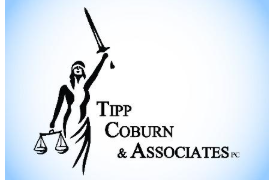Face recognition is one of the technologies that have developed rapidly and drastically changed people’s experience of using digital products. To unlock a smartphone, improve security gadgets, and many more, this technology is being integrated into society’s way of life. However, the wider that is used, the more the ethical issues associated with it also come to the fore. It reviews the shift in face recognition, how it is being used, and the implications that accompany its rollout.
Understanding Face Recognition Technology
In its simplest form, face recognition is a biometric system that uses facial characteristics to either identify or authenticate an individual. It functions by taking a photograph of a person’s face, identifying features of this face, and matching them with those of people in a gallery. It uses algorithms capable of detecting features and making comparisons between faces, which positions the technology for diverse utilization.
The process typically involves several steps:
Face Detection: This is the first step where the software says to itself, ‘I have found a face here in this image or video.’.
Feature Extraction: If a face is to be detected, the software then goes further calculating important aspects like the eye’s space length, the shape of the jaw, and lips.
Face Verification: In this step, the parameters that have been pulled out during the feature extraction are matched with the existing database to give the necessary match. This is where I use facial verification to make sure that the person that is standing before you is the correct one or not.
Identification: When used for identification, it scans the database for one face amidst many faces.
Applications of Face Recognition
The applications of face recognition technology are vast and varied, impacting numerous sectors:
Security and Surveillance: Police departments leverage face recognition technology to identify suspects in real time and thereby improve security. That technology in surveillance cameras coordinates with the authorities when a known criminal is identified.
Smartphones and Devices: One of the widely used biometric features in smartphones is face unlock, where the users can unlock the user interfaces of the smartphones and access their data easily and securely.
Retail and Marketing: An example of the application of the face recognition is that retailers are using it to analyze facets such as the sex and age distribution of their customers. These findings can be useful for the adjustment of the marketing campaigns and the enhancement of customers’ satisfaction.
Banking and Finance: Facial verification is being applied in financial institutions to identify users during transactions to increase security, and reduce cases of fraud.
Healthcare: In general, face recognition applied in the healthcare context can enable fast identification of the patients and administer the correct treatment and drugs to them.
Social Media: Today, with the help of face recognition, Facebook suggests tagging the person in the picture, and this takes a lot of time to share the picture or witness with friends.
The Ethical Considerations
Although it is evident that face recognition technology has brought lots of advantages, it poses great ethical issues. But the liberation of such powerful technology to society raises consideration on the effects of its usage as it gains ground.
Privacy Concerns: Privacy is one of the most chronic problems involving face recognition technology. People are often unable to realize they have their faces being taken and used to create databases that can later be used for identification, and thus they take a stand against being followed and their data collected without their knowledge.
Bias and Discrimination: Research has also found that face recognition algorithms are also not accurate and can be racially and sexually discriminative, especially against black people and women. This can lead to an increased probability of false positives or name-home bias and, logically, racism.
Security Risks: Like any other technology in the world, face recognition systems can be compromised or utilized in a wrongful manner. When dealing with sensitive information, it is possible for such information to fall into the wrong hands, and this may result in more incidents such as credit card fraud and identity theft, among others.
Lack of Regulation: The tools have evolved at a much faster pace than the laws to govern their usage, especially face recognition technology. An issue of concern with this process is that it is very easy for the two entities to exploit the system in their own selfish interests.
Public Trust: Having ethical considerations of face recognition that breeds distrust in institutions. If people dislike the fact that they are privacy-invasive or feel that they are being targeted, then they are not likely to present a good image of themselves, and this may invite a breakdown of the relationship between the authorities and the citizens.
Striking a Balance
Finally, it can be stated that in order to reap the advantages of face recognition and at the same time avoid the misuse of the technology, a middle ground is best taken. Here are a few potential solutions:
Transparency: This is because organizations that adopt face recognition should give information on how they capture data, retain it, and process it. To enhance this aspect, issues need to be communicated in a clear and concise manner so as to enhance the confidence of the public in the information given.
Regulation: For this reason, governments have the responsibility of putting into place rules that would dictate the application of face recognition systems. This entails procedures on how data is collected, stored, and used and how ID is minimized and prevented within operations.
Bias Mitigation: It is in software developers’ best interest to ensure their face recognition algorithms do not involve unfair discrimination to users, these algorithms should be tested for biases, and inaccuracies need to be fixed.
Public Engagement: There is a sense in which, by broadening the public discourse to address these concerns about face recognition, people can be made to feel more ownership for exactly how that technology gets used and thus more invested in the process by which it is developed and rolled out.
Ethical Frameworks: If implemented, face recognition technology should be implemented ethically; thus, organizations should incorporate acceptable standards for the technology.
Conclusion
Facial recognition is a great technology that has the potential to better the lives of a vast number of people as well as innovative advancement, which has a sting behind every facet in the digital world. Nonetheless, the technology has the potential to provide solutions to different sectors, as mentioned above, but Python has some ethical issues that need to be addressed. With the proper support of the transparent information flow, establishing the necessary regulations, and putting the fairness of face recognition into a priority, society can use this powerful tool and protect the rights of every citizen at the same time. I believe that moving forward, it is essential to learn how to be innovative with technology while also being ethical with it to make it benefit the world.



































